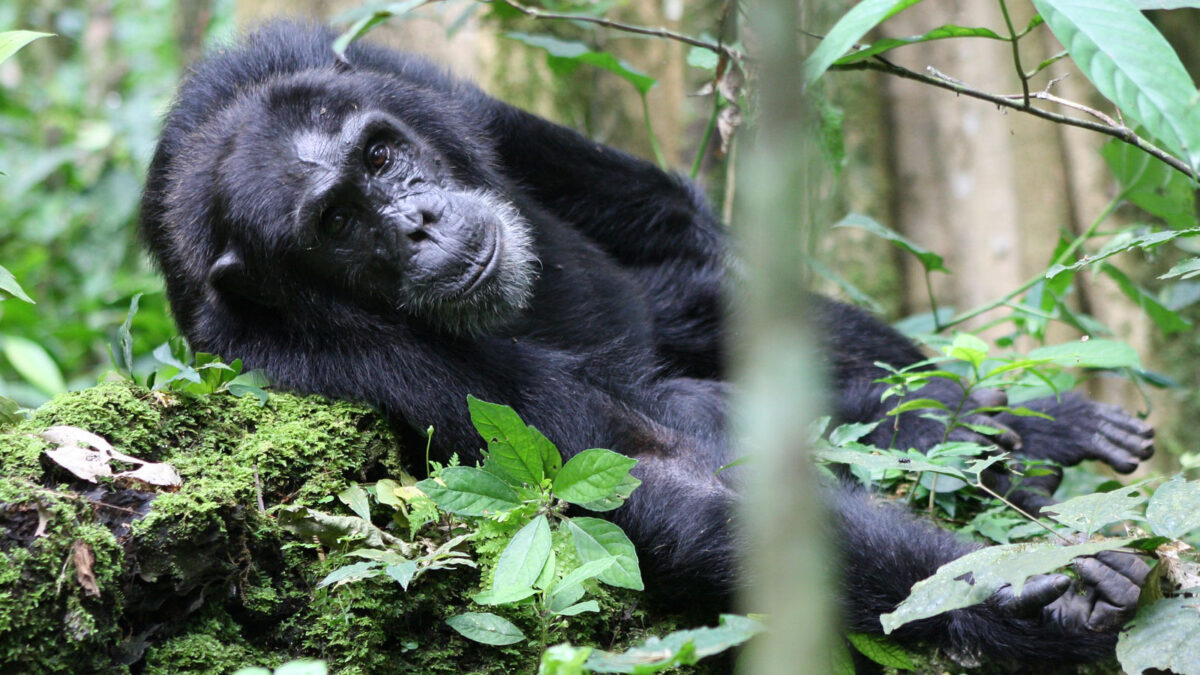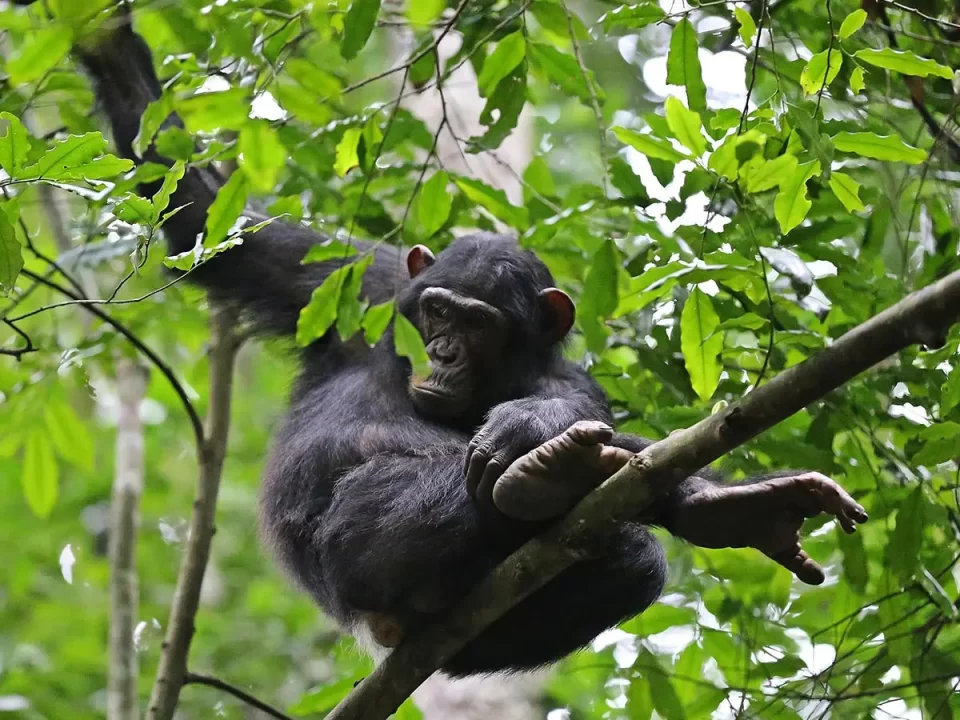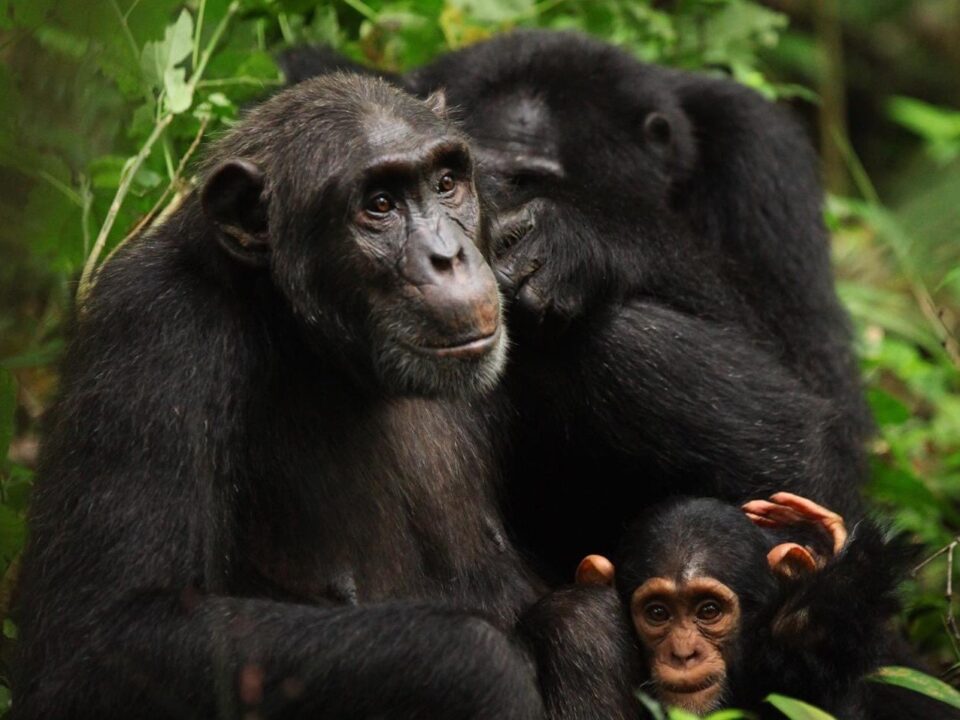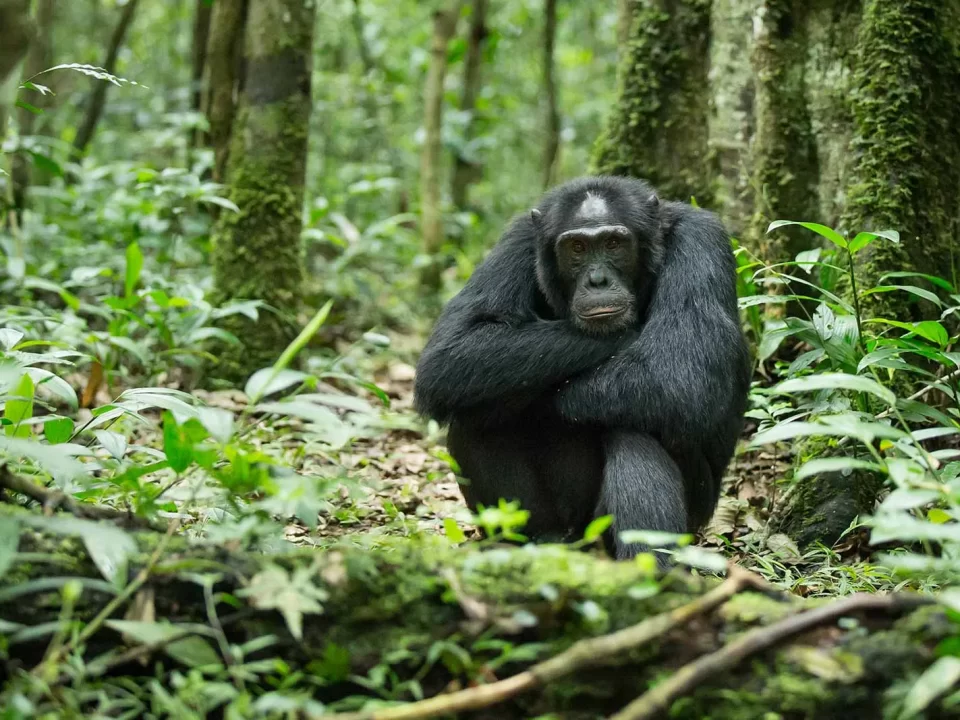Best Places To See Chimpanzees in the Wild

Comparing Gorilla Trekking to Chimpanzee Tracking
December 16, 2022
Gorilla Trekking Tipping Advice
December 16, 2022Best Places To See Chimpanzees in the Wild
Chimpanzees are facing declining populations across their range in Africa. However, eco-tourism that is well-managed can help protect the forests that are vital to their survival. The Albertine Rift, which is located where East Africa meets the jungles of the Congo, is a great destination for those interested in primate-watching. This region is incredibly biodiverse and is home to most of Africa’s chimpanzees, as well as more endemic wildlife species than any other eco-region on the continent. Uganda is particularly known for its prime habitats for chimpanzees, mountain gorillas, golden monkeys, and other primates. However, it is not the only option for those interested in visiting these regions.
- Kibale forest National Park
- Budongo Forest Reserve
- Kyambura Gorge.
- Mahale Mountains National Park.
- Gombe Stream National Park.
- Nyungwe National Park,
Kibale forest National Park
Kibale forest National Park is the most popular destination for chimpanzee viewing. There are many accommodations available in the area and the terrain is relatively flat and easy to navigate, with minimal underbrush. During one-hour chimp sightings, groups may take turns observing the chimpanzees, but it is also possible to book a full-day Habituation Experience year-round, which can provide longer and quieter sightings that may be less predictable. It is also possible to encounter elephants in the park, but visitors will be accompanied by an armed guide who can take necessary precautions to ensure safety.
Budongo Forest Reserve
Situated near Lake Albert and within the Murchison Falls Conservation Area, this reserve is home to over 600 chimpanzees and features a rustic eco-lodge with connections to a research station. The terrain is relatively flat, and tourists can choose to go on a half-day tour to observe a habituated group for an hour, or during low season (January to June and October to December), they can spend an entire day in the forest. This is a great experience, although the canopy is denser than in Kibale, making photography more challenging.
Kyambura Gorge
Kyambura is a forested ravine located on a grassy plain, with a beautiful riverside path at its base. The small community of chimpanzees in this area has a sad history: they are isolated from the main Maramagambo forest by an overgrown village and grasslands where predators such as lions and hyenas reside, and they have already begun to show signs of inbreeding. Visitors can book a guided walk through the gorge during their stay, and even if they only catch a glimpse of the chimpanzees, the walk itself is beautiful.
Nyungwe forest National Park
Nyungwe Forest National Park is a protected area in Rwanda known for its diverse array of flora and fauna, including chimpanzees. Located in the southwestern part of the country, Nyungwe is home to a large population of chimpanzees, as well as other primates such as colobus monkeys, mangabeys, and baboons. Visitors to the park can take guided chimpanzee tracking expeditions to observe these intelligent and social animals in their natural habitat. In addition to the chimpanzees, Nyungwe is also home to over 300 species of birds, making it a paradise for birdwatchers. The park is also known for its extensive network of hiking trails and waterfalls, making it a popular destination for eco-tourism and nature enthusiasts.
Gombe Stream National Park
Gombe Stream National Park is a protected area located in western Tanzania, on the eastern shore of Lake Tanganyika. The park is best known as the site of Dr. Jane Goodall’s pioneering research on chimpanzees, which began in 1960 and continues to this day. The park is home to a large population of chimpanzees, as well as other primates such as red colobus monkeys, red-tailed monkeys, and baboons. Visitors to the park can take guided chimpanzee tracking expeditions to observe these intelligent and social animals in their natural habitat. In addition to the chimpanzees, Gombe Stream National Park is also home to a variety of other wildlife, including bushbucks, red-tailed monkeys, and baboons. The park is also known for its stunning views of Lake Tanganyika and its surrounding forests and savannahs.
Mahale Mountains National Park
Mahale National Park, located in the Rift Valley, is the largest accessible habitat in the region, covering an area of 1,613 sq km. It is home to a variety of wildlife, including chimpanzees, which can be observed on tracking expeditions led by knowledgeable guides at Greystoke Mahale, the best lodge in the area. The park rangers at Mahale are dedicated to protecting the primates and ensuring the safety of visitors by enforcing strict guidelines, such as limiting the duration of visits and requiring the use of masks to prevent the spread of infections. Despite the demanding nature of the tracking expeditions, the stunning lakeside setting of Lake Tanganyika adds to the overall beauty and specialness of the experience.
Other Places for Observing Chimpanzees in Rwanda, Burundi, and the Democratic Republic of Congo
Several new destinations for chimpanzee tracking are in the works, including Gisovu and Gishwati forests in Rwanda. While these forests currently have small communities of chimps that are not fully habituated, they may become more accustomed to human presence in the future. The new Gishwati-Mukura National Park is scheduled to open to tourists in 2019.
The Tongo Forest project in the Virunga National Park in the Democratic Republic of Congo has been disrupted by civil unrest and is currently off-limits to visitors. However, if peace is restored and plans to exploit its oil reserves are abandoned, this could potentially become another excellent place to see chimpanzees and gorillas.
Kibira National Park in Burundi, an extension of Nyungwe, is known for its abundance of fruit and flowers, which attract both chimpanzees and birds. Currently, the Foreign and Commonwealth Office advises against all travel to this park, but in the future, chimp safaris in the area could provide income for marginalized Batwa communities.




